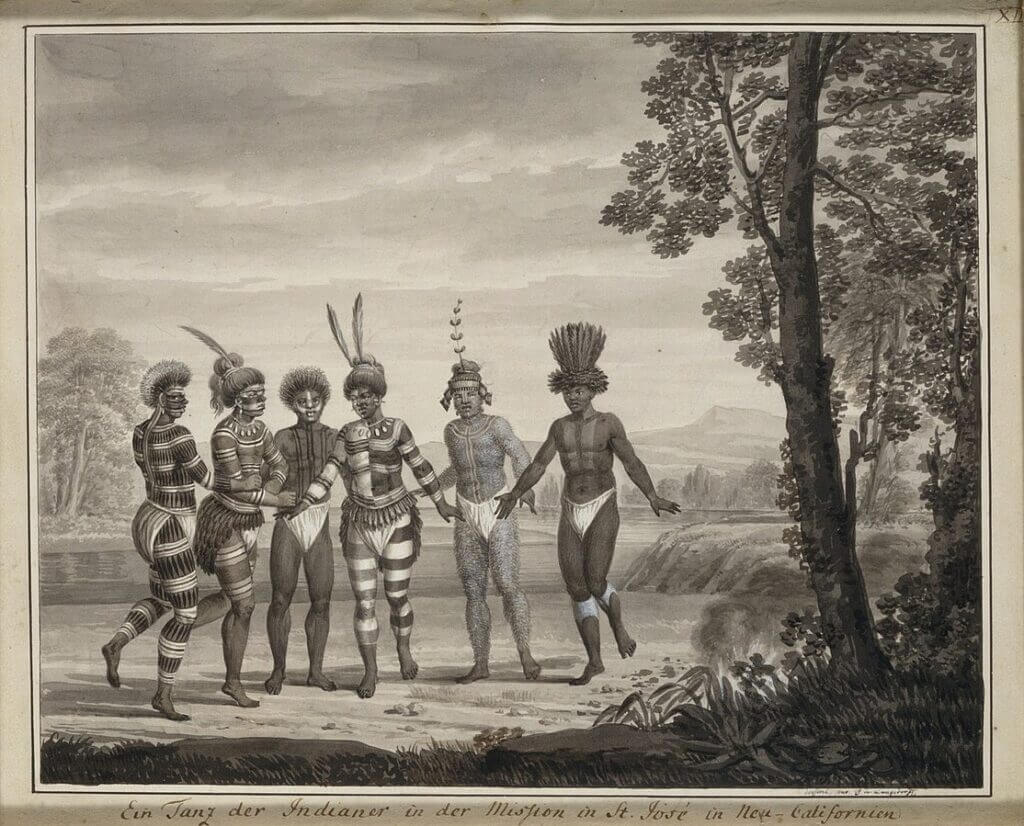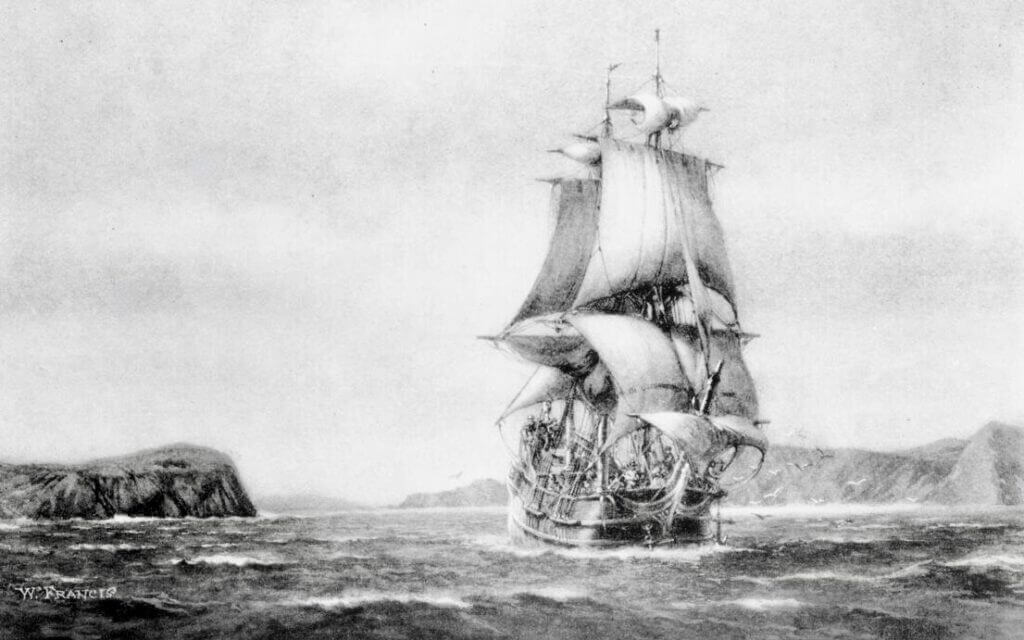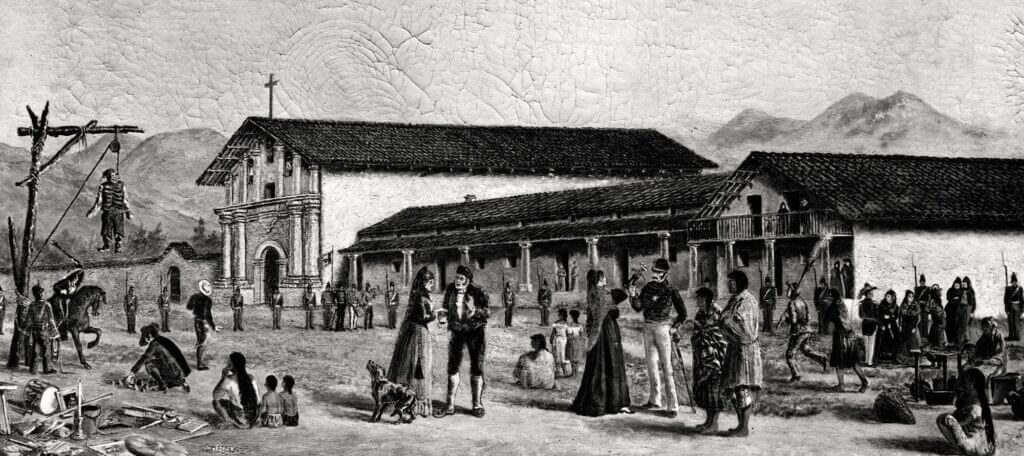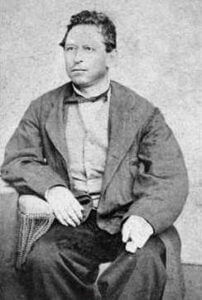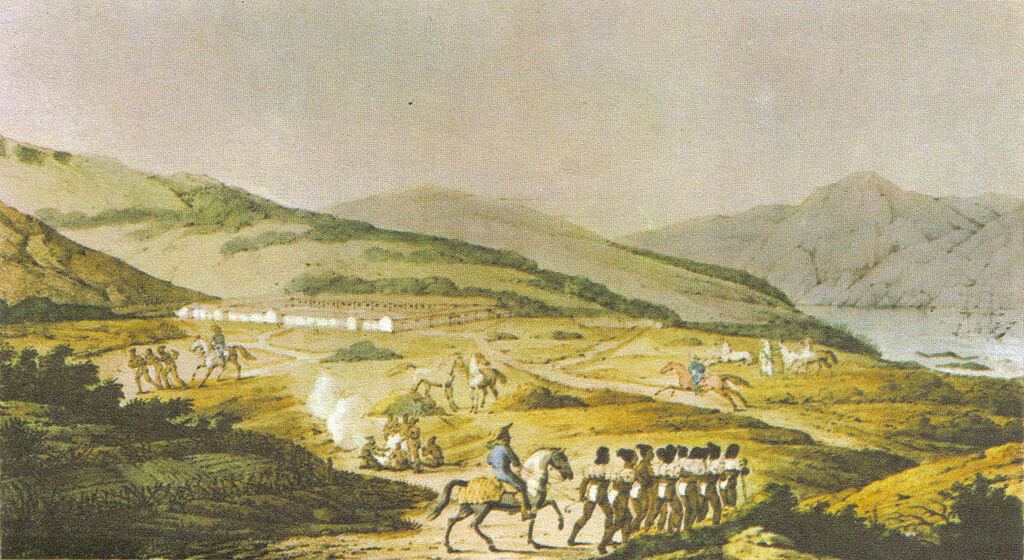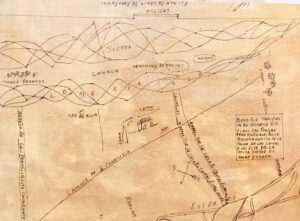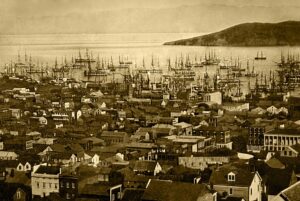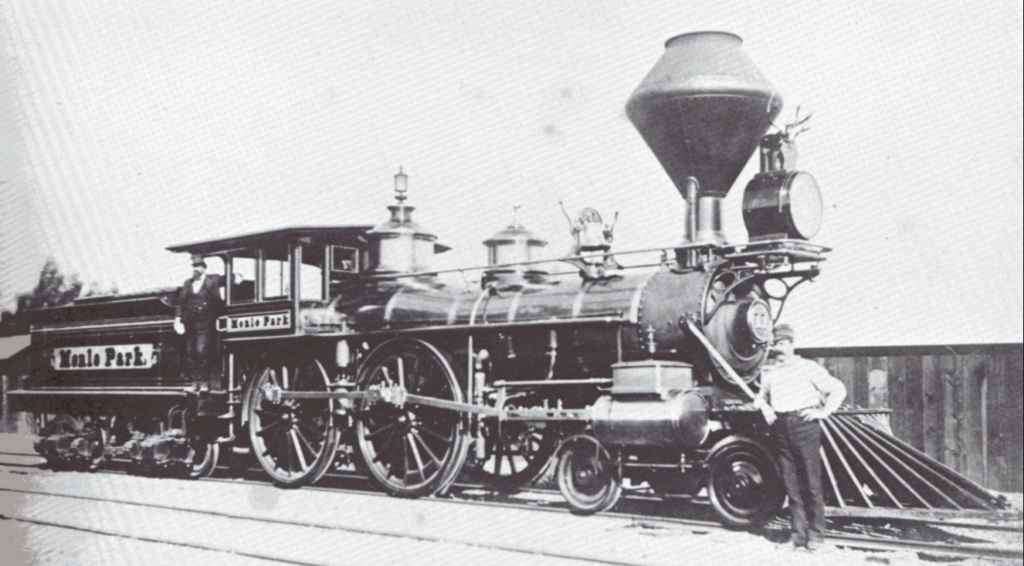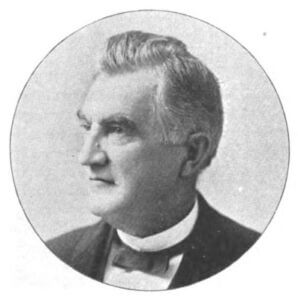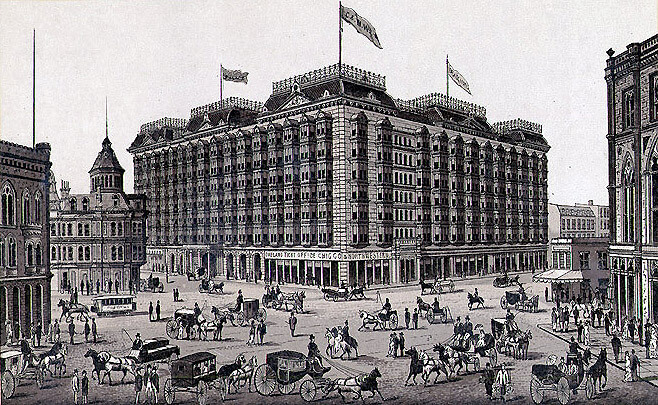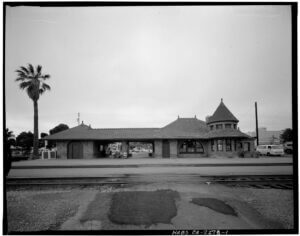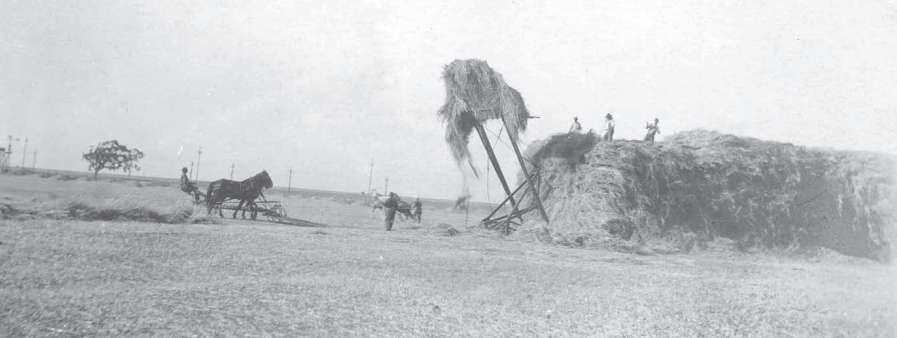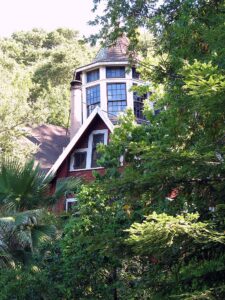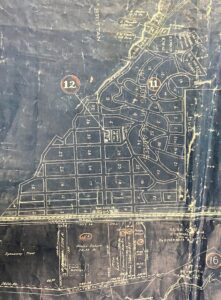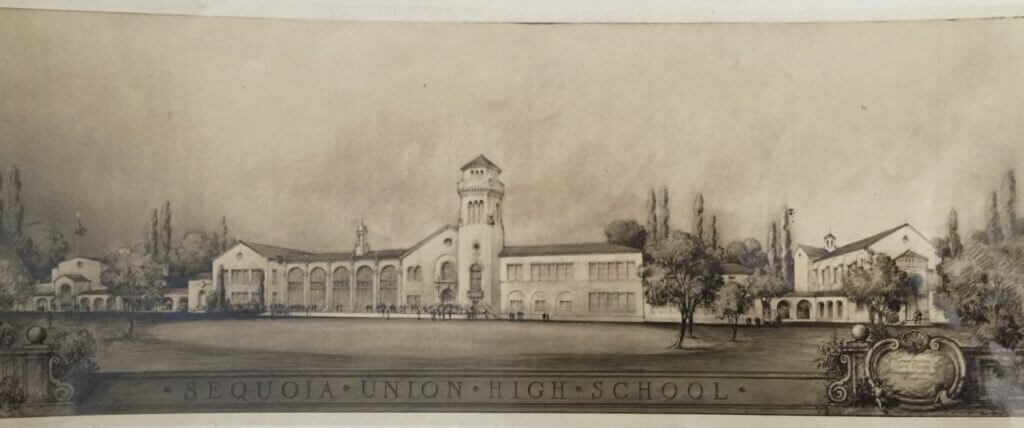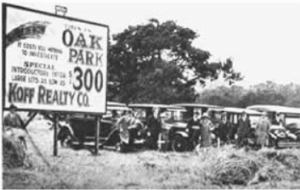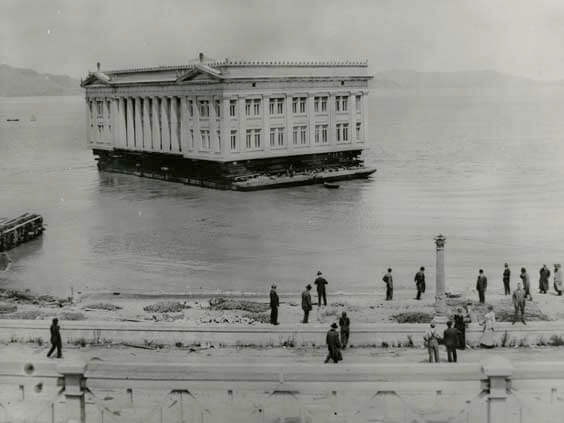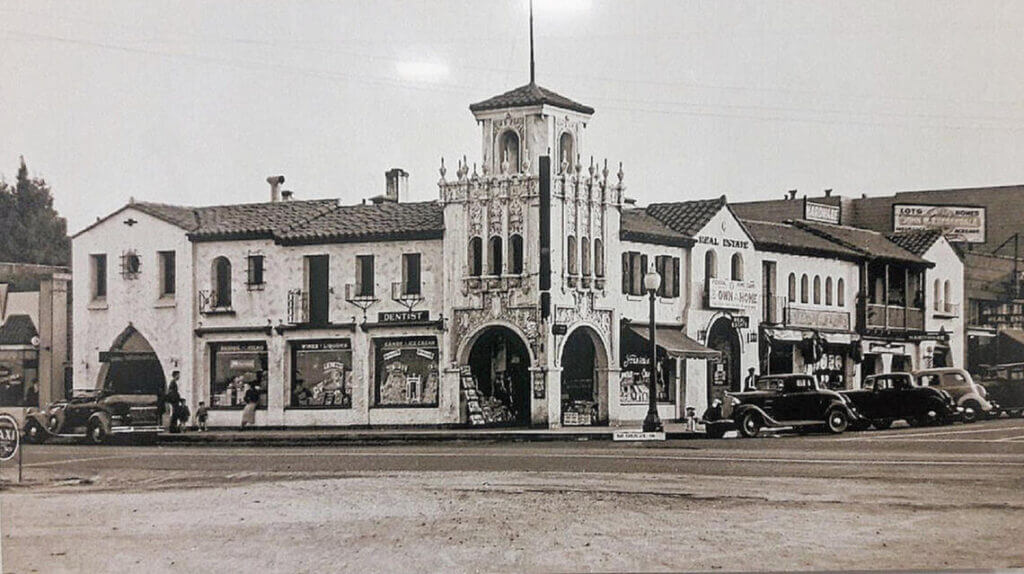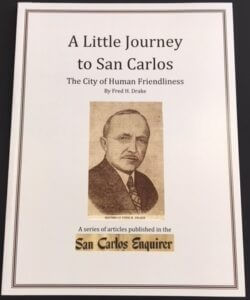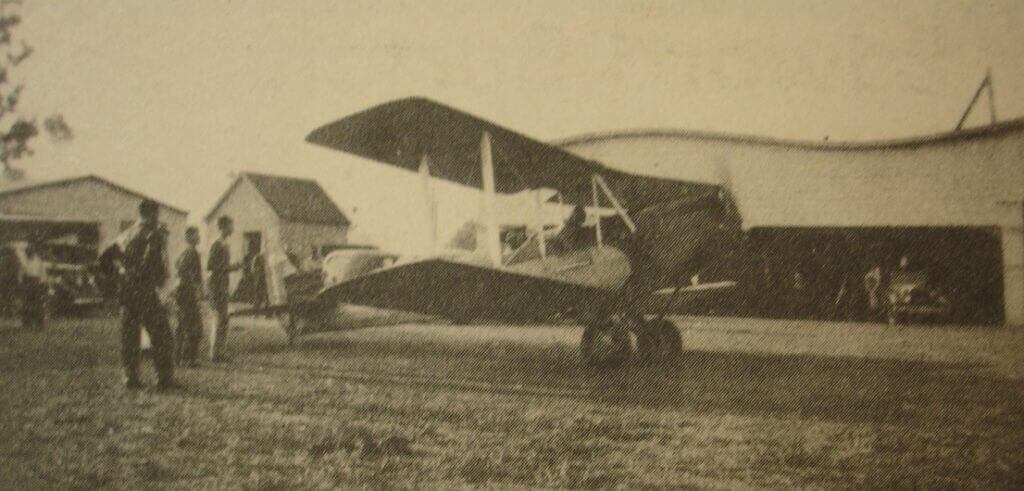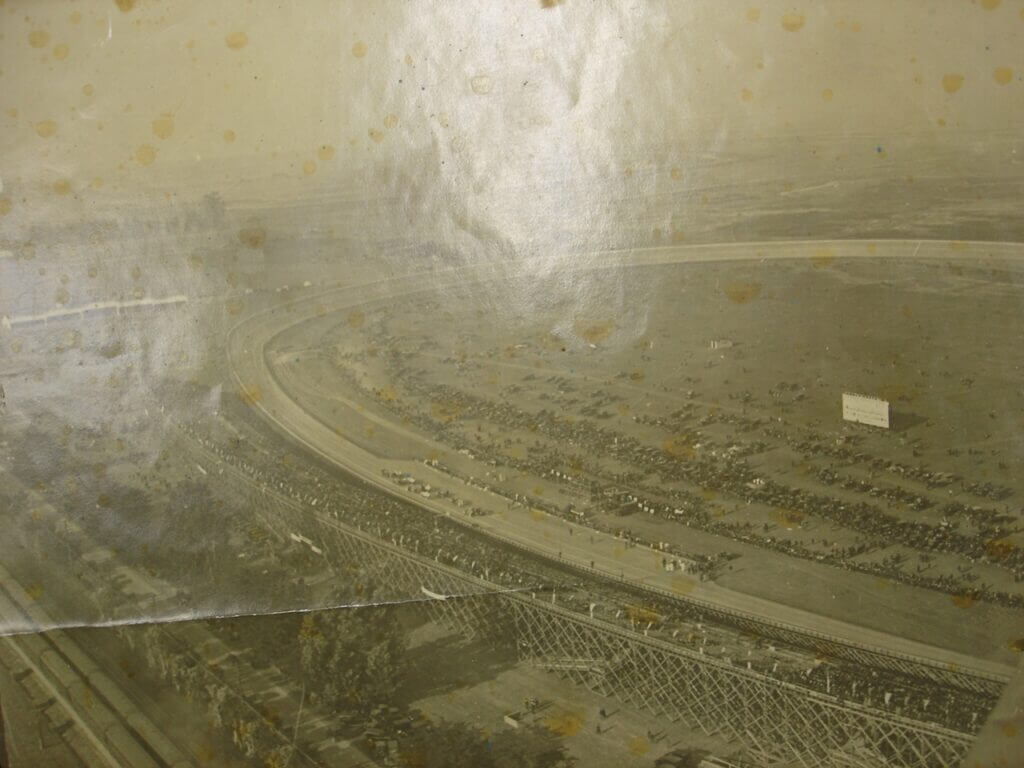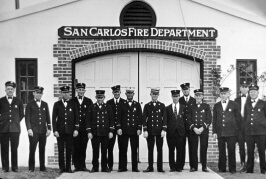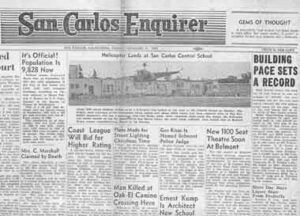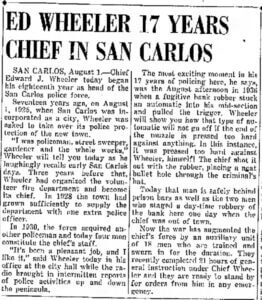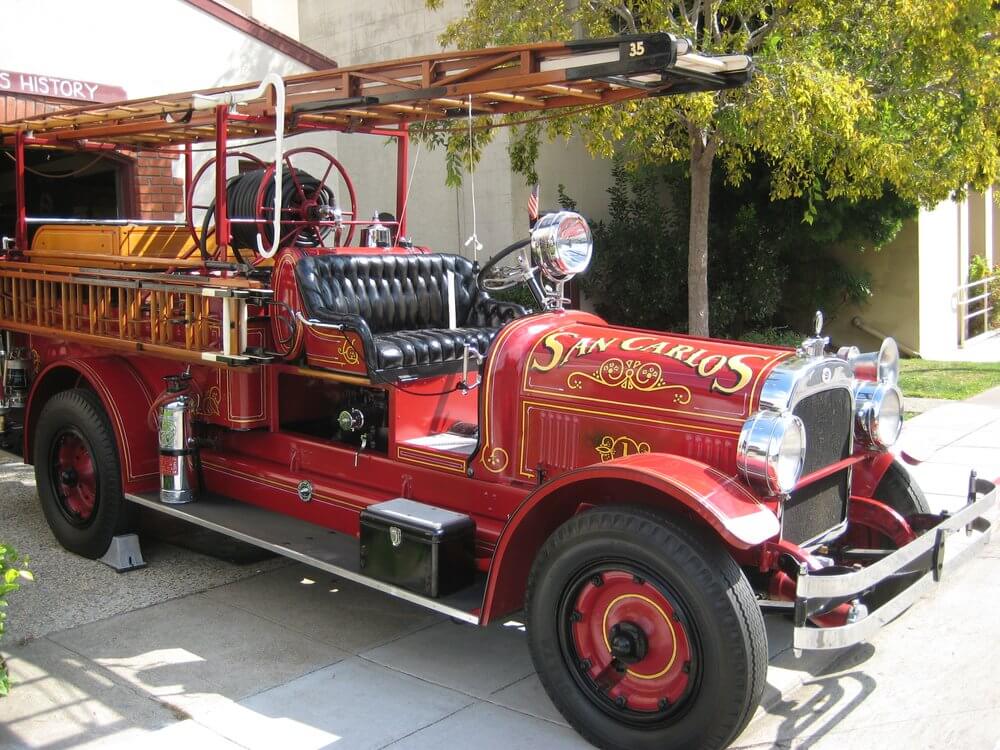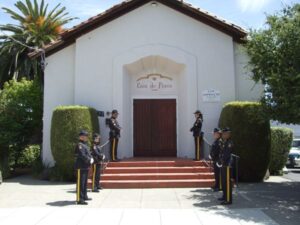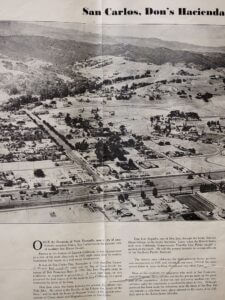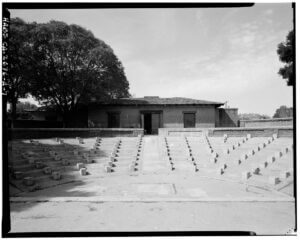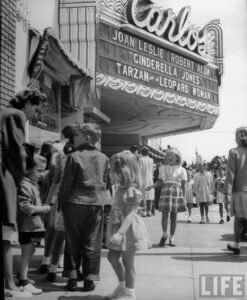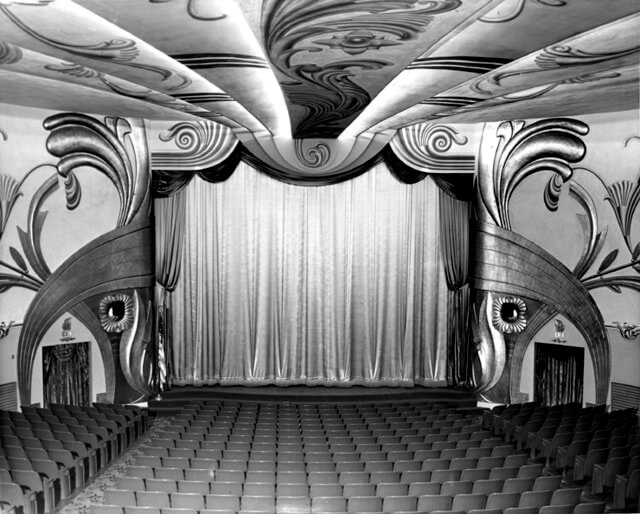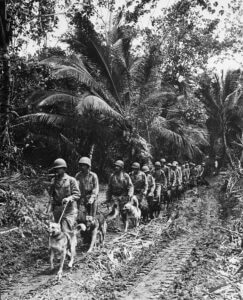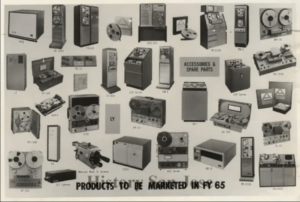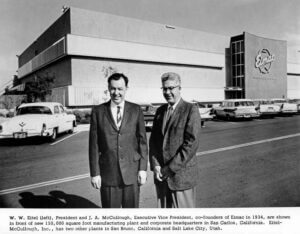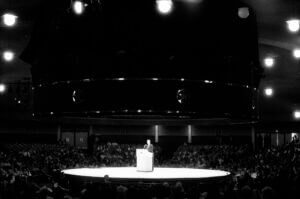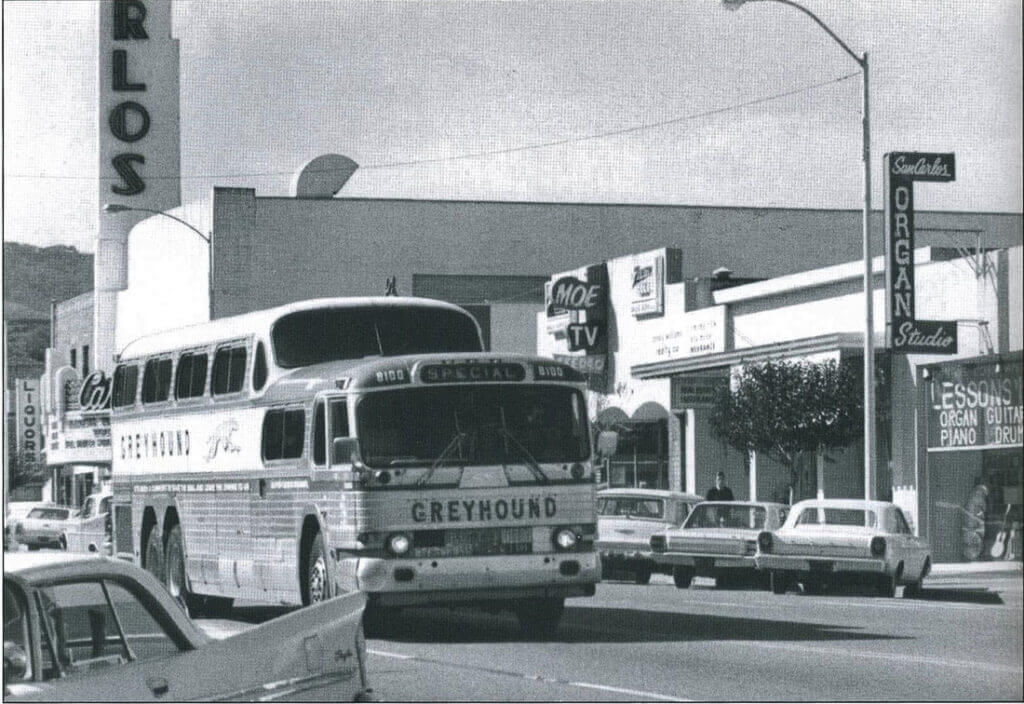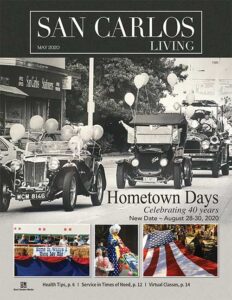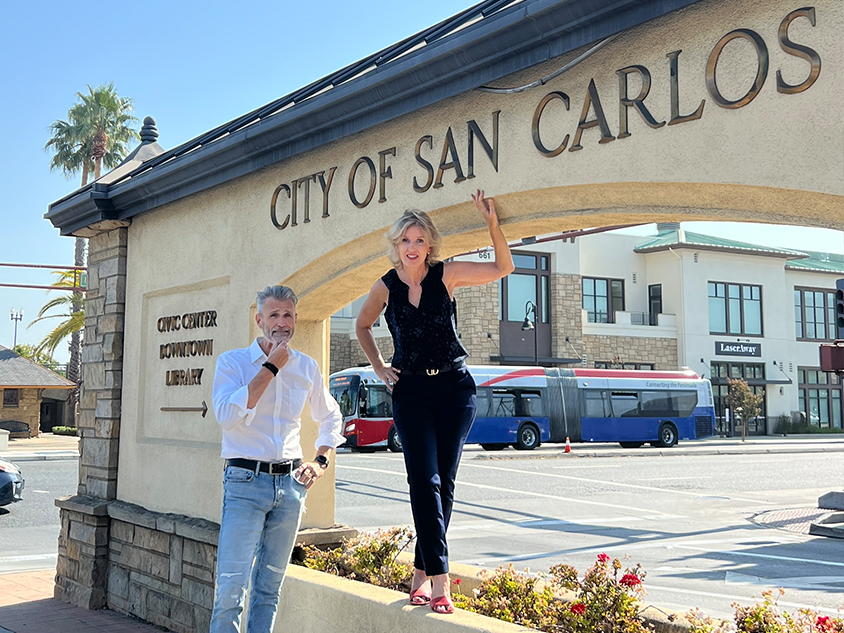HISTORY OF SAN CARLOS
The first known residents’ of our city were the Costanoan (Coast People) Indians. A peaceful tribe, they were most happy here where food, shelter and clothing were plentiful.
In 1769 Don Gaspar de Portola’s expedition discovered this area and claimed it for King Carlos III of Spain. In August 1775, Lt. Juan Manuel de Ayala brought his sailing ship, the “San Carlos”, into San Francisco Bay and anchored in what is now Ayala Cove. His mission was to develop a map of the bay on which future Spanish ship captains could rely. Ayala has the distinction of being the first navigator to enter the San Carlos port.
After several explorations which included Fr. Junipero Serra and Don Jose Dario Arguello (Captain in the Castillian Army) Mission Dolores and the Presidio in San Francisco Were established. It is with Capt. Arguello that San Carlos history begins to take form.
Established in 1776 by the Franciscan order, the Mission Dolores is the oldest surviving building in San Francisco. Formally named Mission San Francisco de Asís, after Saint Francis of Assisi, the mission was nicknamed Mission Dolores after the nearby creek, Arroyo de Nuestra Señora de los Dolores. This mission was how San Francisco got its name, and is coined by some as the “birthplace” of San Francisco.
PHOTO: Mission San Francisco de Asis before 1835, from the United States Library of Congress
Because of Don Jose Dario Arguello’s fine job in keeping peace between the soldiers, Indians and colonists at the Presidio and Mission in San Francisco, plus his loyalty to the Crown of Spain, King Carlos III in 1795 granted to him 35×240 acres of land wherever he chose in all of Alta (Upper) California. He chose the lands of San Mateo County and San Carlos became his rancho headquarters.
Don Jose Dario Arguello became Commandante of the San Francisco Presidio (1787-1791) and (1796-1806) and the 9th Gobernador of Alta California (under Spanish rule) in 1814. He named his rancho in San Carlos “Rancho los Cochanitos”. He was born in 1755 and died in 1828.
Don Jose Dario Arguello’s son, Don Luis Antonio Arguello inherited the rancho. He married Maria de Soledad de Ortega and built an adobe hacienda on the corner of Magnolia and Cedar (approximately 1821) and was Commandante at San Francisco Presidio in 1806 and Presidente there in 1822-1825.
In 1822 he became Gobernador of Alta California (the first native son to become Gobernador under Mexican rule). In 1823 he and his family moved to Monterey where he died in 1830. It was in his time that the rancho in San Carlos became known as “Rancho de las Pulgas” (Rancho of the Fleas). Don Luis was born in 1784 and died in 1830.
PHOTO: The Hispanic colonial era Presidio of San Francisco and the Golden Gate. Drawing by Louis Choris – Rurik-Expedition, in November 1817.
After Don Luis’ death, Dona Maria returned to San Carlos, built another casa in 1839 (next to her old one) where she lived until 1854. She died in 1874. The lands of Don Luis were regranted to her in 1835. Upon her return from Monterey, there were squatters, etc. on the rancho lands. She sent for Mr. S.M. Mezes (attorney), who, by her, request, subdivided the lands for purchase. For this good work, Mr. Mezes received 15% of the property (which included Redwood City and parts of San Carlos).
PHOTO: Diseños of land grant for the Rancho De Las Pulgas, circa 1840, from San Mateo County Historical Museum
There was the Gold Rush in 1849 and California Statehood in 1850. It was now that lands in the state were being ‘turned over from Spanish hands to American.
PHOTO: San Francisco harbor at Yerba Buena Cove in 1850 or 1851 — with Yerba Buena Island, and Berkeley Hills, in the background.
The first American to own land in San Carlos was Timothy Guy Phelps, a mercantile merchant in San Francisco. He purchased 200 acres from Dona Maria (through Mezes). This included the adobe owned by Maria. He lived in this adobe until he built a board and batten house next to it. He later purchased up to 3,500 acres of San Carlos land, (on which he raised cattle that were shipped to San Francisco by barge). (Phelps became the first president of the Southern Pacific Railroad). He became our first State Senator, first Congressman (in the 1860’s), Assemblyman, was our first homeowner, first commuter and first public citizen. (and an early Regent of the University of California at Berkeley. Later he was appointed Collector of Customs in San Francisco.) He later built a mansion on Old County Road and Holly (where 7-11 Store is now). Only 1 palm tree remains of his estate.
Mr. Andrew Julius Johnson from Denmark, employed by Mr. Phelps as foreman, per Phelps instruction, planted the eucalypti that now grace San Carlos Avenue near Cordilleras in 1892.
PHOTO: Timothy Guy Phelps, published 1892
In 1858 John Brittan, a hardware dealer in San Francisco, purchased 3,000 acres of land from Dona Maria, (extending from Cordilleras Creek (near Redwood City) to Pulgas Creek (between Arroyo Avenue and Olive Street) and west to Canada Road.) He built his home (Wesley Bays) on what we know as St. Frances and Elm Sts. John Brittan’ had three children William, Mary and Nathaniel.
Mr. William Whipple Hull, a former miner turned brickmaker, purchased 40 acres of land from Senator Phelps in 1858. He constructed kilns and made bricks for his brickyard in San Francisco. (Bricks from San Carlos were used in many important buildings of the day, such as Fort Mason and San Quentin Prison.) With these bricks he built the original Palace Hotel, San Francisco’s first post office and part of that city’s Ferry Building. He had four children. Two of them, Guy and Asa, started a dairy on part of the land and when Guy went to work for the Southern Pacific Railroad, Asa took over the running of the dairy. We will follow the history of Asa as it is more involved with our city’s history.
PHOTO: Engraved illustration of the original Palace Hotel in San Francisco, CA, 1887, from “Historical Souvenir of San Francisco, Cal.” published by C.P. Heninger, San Francisco
It is with Nathaniel that we continue our history.
The San Carlos Station (Southern Pacific Depot)
When the San Francisco-to-San Jose railroad was being laid in 1864, Nathaniel Brittan granted the right-of-way through his property, with the stipulation that a station agent and telegraph office be maintained at all times. Brittan was a friend of Leland Stanford who arranged to lend his University stone masons for the building of the San Carlos (Southern Pacific) Depot in 1888. This is how our now famous landmark, the Southern Pacific Depot, came to be built. It is a rare example of the use of the Richardson Romansque style in California railroad station architecture. It was the first permanent building erected by the San Carlos Land Company to form the nucleus for their speculative town development.
Nathaniel’s Party House
In 1873 Nathaniel Brittan inherited the lands between Pulgas Creek and Brittan Ave. from his father and built his Manor House on Pine in 1881. The home included a bear pit, aviary and fine gardens. Nathaniel also had a huge hunting lodge built on the present Dale Avenue near his elaborate home so as not to disturb Mrs. Brittan when he entertained his cronies. At one time he wished, to build a “Country Jinx” Clubhouse where the Bohemian Club could meet on Druids Hill near the present intersection of Orange and Elizabeth Streets. A cornerstone was laid, but the clubhouse never came about. The original Bohemian Club cornerstone was first laid at the corner of Orange and Elizabeth Sts. and is now at the Bohemian Club Grove, Russian River. Mr. Brittan was one of the founders and a past president of the Bohemian Club, which was formed in 1872. Brittan Ave. in San Carlos is named for this family.
Nathaniel died in 1912. He had three children, Natalie, Belle and Carmelita. There are streets in San Carlos named after these children.
PHOTO: Southern Pacific Depot, 559 El Camino Real, San Carlos, San Mateo County, CA. By Historic American Buildings Survey. Documentation compiled after 1933
Asa Hull was born in 1870 and died in 1940. During the late 1800’s and early 1900’s grain was being cultivated on the vacant lots in our town and the milk from the dairy was being sold for $.05 a quart (as long as residents brought their own 1982 containers). Asa and his brother sold the farm in 1918 although Asa lived on the land of his, father until his death. He was widely known for his bounty to strangers and transients alike. Asa was the 3rd Mayor of San Carlos and served three consecutive terms from 1932-1940. Hull Drive is named in honor of this family.
PHOTO: Harvest time at Asa Hull’s farm in the San Carlos area, from San Mateo County Historical Association
Between 1888 and 1914 the San Carlos Land Company was formed with the main promoter being Capt. N.T. Smith (Treasurer of Southern Pacific Railroad). He was a long time friend of Leland Stanford. The San Carlos Land Company purchased 173.20 acres of land from Senator Phelps and tried to subdivide this property. There was a map of the town at this time which called the lands “Lomi-tas”. Streets were graded and sewers were completed. In 1895 there were less than 50 people in San Carlos.
PHOTO: Parcel divide of the Phelps Estate as of 1917. Phelps’ sales were largely unsuccessful, and he eventually sold much of his land to Nicholas T. Smith’s San Carlos Land Development Company. 1917
Established in 1895, Sequoia is the oldest high school in San Mateo County, and was founded as a preparatory school for Stanford University. When the school was founded, it was the only high school on the Peninsula between San Francisco and Santa Clara. Fredrick Drake was a key organizer of Sequoia High School
PHOTO: Sequoia High School
The second attempt to form a city came between 1907 and 1917 when the San Carlos Park Syndicate was formed. After the 1906 Earthquake this organization bought more acreage from Phelps. In 1907, the San Carlos Park Syndicate used an elaborate sales campaign to try to make San Carlos a second Hillborough, calling the area Oak Park. Mr. William Woosley in 1909 became the secretary of the San Carlos Park Syndicate. He bought the previous land holdings, from the Land Company.
Woosley began the reservoir on Northam, improved San Carlos Avenue (known then as Cypress Ave.), laid sidewalks, installed beautiful concrete urns filled with flowers along the Avenue and had a plan to use the 1915 Panama-Pacific Exhibition Ohio Building as a future clubhouse. To this end, he moved the Ohio Building to San Carlos from San Francisco on the bay on barges (unique to this time). As mentioned, he envisioned the city of San Carlos as the Hillsborough of the peninsula. World War I in 1917 stopped this organization’s progress in the forming of our city and the Syndicate closed its books. The mortgages were then acquired by the Mercantile -Trust Company (later to become American Trust).
PHOTO: In 1907, the San Carlos Park Syndicate used an elaborate sales campaign to try to make San Carlos a second Hillborough, calling the area Oak Park.
PHOTO: On August 16, 1916 the San Francisco Chronicle reported: “At 8 o’clock this morning the Ohio building, a relic of the exposition, will float past the Ferry building on a twenty-three mile voyage down to San Carlos. Everything is in readiness for one of the strangest spectacles ever witnessed on San Francisco bay. Yesterday the big thousand-ton building was successfully moved from its site on the exposition grounds and mounted on a number of barges, lashed together, off the exposition waterfront.
A library was formed in August 1910 due to the efforts of Mrs. Kate Farnham and her daughter Mary. This library was initially located at the Southern Pacific Depot of San Carlos. In 1916 San Mateo County’s first Library Branch was recorded as being here in San Carlos.
In 1916 San Carlos needed a school; a district was formed and there were 20 pupils and 8 grades being taught by 1 teacher in 1 room in a house
The third and last attempt to form our city came in 1917 when Mercantile Trust placed 100 acres of foreclosed real estate (located in San Carlos) in the hands of Mr. Fred Drake, subject to their deed of trust. He finished the reservoir started by Mr. Woosley, paved the streets, formed the Sanitary District and installed gas and electricity. He helped to get homes built and later was a prime mover in getting the School District formed and the City of San Carlos incorporated. Mr. Drake became fondly known as the “Father of San Carlos”. He also coined the San Carlos City slogan “The City of Good Living”.
PHOTO: The old office building of Frederick Drake, courtesy of Drake’s Restaurant.
Together with these industrial complexes being formed, other commercial businesses were being built around San Carlos Ave. and El Camino Real. In the late 1880’s San Carlos Ave. was known as Cypress Ave. Mr. Phelps’ farm and mansion surrounded the SP Depot. On the north side of San Carlos Ave. (first block) stood Merta’s Butcher Shop (now San Carlos Liquors), the Windmill Restaurant (now Patio Bar), Conklin’s Mobil Gas Station and grocery store (now a gas station). On the south side of the first block stood Mr. Drake’s building, a barber shop, a butcher shop (now 1139 Slub). In the second block to the north were the N.T. Smith’s home, a Bank of America building, Allen’s Grocery Store and the Carlos Theatre. These sites are now occupied by Eureka Federal Savings (built 1979).
In the second block to the south stood the McDonald home. This site is now occupied, by Laurel Drug, The Added Touch, Norma’s Jewelers, Ed’s Smoke Shop and Tiernan’s Opticians. Along El Camino Real there was also commercial development. We should remember that Old County Road was then known as El Camino Real and what we know today as El Camino Real was then called Maple Street (changed in 1915).
Across from the depot on El Camino Real, south of San Carlos Avenue was Mrs. Tate’s Tea Room (now the Carlos Clubhand Munday’s (now the Hair Hunters). On the north was Martin’s Lumberyard and the Hull Brickyard. On the east was the San Carlos Flying Field, San Carlos Feed and Fuel and the San Francisco Speedway.
In 1916 a Flying Field was developed between San Carlos Ave. and Brittan (east of-the railroad tracks). In 1919, a hangar and a flying field were built between San Carlos Avenue and Brittain Avenue east of the railroad.
PHOTO: Plane taxiing in front of hangar at San Carlos Airport 1920s (San Carlos Enquirer, July 1975).
The townspeople were overjoyed–with the coming of a lumberyard in the 1920’s, owned, by James-H. Martin (1st Mayor of San Carlos 1927-1930). They then could obtain the lumber to build their own homes.
In the 1920’s, at the northeast edge of town, was a lumberyard owned by James Hugh Martin, who served as the first mayor of San Carlos from 1927 to 1930. Arroyo Avenue marked the southern edge of development.
A 1-mile long speedway / motordrome was built in 1921 on the present site of Lenkurt Electric. The “Greater San Francisco Speedway” was 50 feet wide, a quarter mile in length, and “saucer-shaped,” lacking any straightaways at all. Then motordrome creator, Jack Prince, dubbed it his masterpiece.
The December 11, 1921 inaugural race drew a crowd of 40,000, equivalent to about eight percent of the population of San Francisco at the time. Celebrity drivers competed for a purse worth the equivalent of over $600,000 today. But by June 1922, the speedway was gone forever, after hosting only three auto races in its brief lifetime. It wasn’t another strike, and races didn’t go out of fashion. Rather, a summer brush fire spread to the structure. The track was made entirely of wood, and had been soaked with oil from dozens of cars.
PHOTO: San Carlos Speedway and Hanger, from the San Carlos Aviation Association Collection
In 1923, a volunteer fire department was formed using a fire truck composed of a white taxicab chassis with a chemical truck body donated by the San Francisco Fire Department. So successful were the fundraising card parties and dinners given by the volunteers and their wives that a firehouse was erected in the same year! Before this time, a hay wagon and wet gunny sacks drawn by Asa Hull’s horses were how they fought fires in San Carlos.
In 1925 Police Chief Ed Wheeler doubled as the Fire Chief. In 1979, the City of San Carlos and the Belmont Fire Protection District entered into a Joint Powers Agreement, which created the South County Fire Authority. More recently, the City of San Carlos joined with the City of Redwood City to provide fire services to the community.
PHOTO: The first Fire Department, from the San Carlos Museum
With 600 persons in residence, the citizens of San Carlos voted to incorporate the city in June 1925. Frederick Drake, known as the “Father of San Carlos”, continued to promote the town and coined the motto “The City of Good Living”. Drake also founded the San Carlos Enquirer (now the Independent Newspaper). He was also a key organizer of nearby Sequoia High School and established the Chamber of Commerce in 1926.
The San Carlos Enquirer
In 1925, the San Carlos Police consisted of one man: Ed Wheeler, who served as Police Chief in San Carlos for 27 years. In this news article from 1942, the journalist narrates one of the most exciting moments for Wheeler as Police Chief: “The most exciting moment in his 17 years of policing here, he says, was the August afternoon of 1936 when a fugitive bank robber stuck an automatic into his mid-section and pulled the trigger. Wheeler will show you how that type of automatic will not go off if the end of the muzzle is pressed too hard against anything. In this instance, it was pressed too hard against Wheeler himself. The chief shot it out with the robber, pining a neat bullet hole through the criminal’s hat.”
PHOTO: From “The Times and Daily News Leader” August 1, 1942
The Post Office was established in 1895 at the Southern Pacific Depot and run by Mr. Nathaniel Brittan. As the town grew it eventually moved to four different locations to accommodate its business.
During 1926, 20-year-old Mary Kay Davis began the $60 per month job as San Carlos’s first postmaster. As a requirement for the job, Mrs. Davis had to provide a post office. Using money she and her husband had saved, she had a small post office built in front of her home in the 700 block of El Camino Real. As the population increased, the post office moved three times to larger quarters before settling at its present site at 809 Laurel Street.
Also in 1926, the phone company built an $11,000 building in the 500 block of Laurel Street. In that same year, Southern Pacific built a spur track servicing San Carlos.
The first church in San Carlos was begun – The Community Church in 1928. It was followed by St. Charles in 1929. On June 23, 1929, the first pastor of St. Charles Parish, Father Harold Crampton, celebrated the first mass in the church built on Walnut Street (now Casa de Flores)
PHOTO: The original church building in Walnut Street, now named “Casa de Flores”
Not until 1940, did San Carlos experience its first big spurt in population growth, growing to 3,520 residents. In 1944, Dalmo-Victor and Ampex Corporation established the city’s first large electronics plant, followed soon after by Eitel-McCullough, owners of Eimac.
Establishment of these two firms was a factor in the quadrupling of San Carlos’s population in the decade after 1940. In 1950, when the population was 14,371, the city boasted a total of 89 industries-wholesalers, manufactures and distributors of a variety of commodities from electronics to cosmetics. By 1958, the electronics industry comprised a substantial segment of the city’s industrial area.
Burton Park was the first public recreational facility established by the City. Along with other community developments, land for a city park was purchased in 1936 and the park was financed in March 1938 when citizens passed a 20-year bond issue for purchase of designated property. Interesting fact: a provision in the sale precluded the land from being used for the game of baseball!
In 1938, the WPA (Works Progress Administration) constructed the amphitheater and the adobe brick building. The San Carlos Men’s Athletic Club, through its president, Edward R. Burton, Sr., successfully argued for the baseball issue, which led to the purchase of an additional 3.38 acres for the park where the game could be played. The park was dedicated on July 28,1940 and re-dedicated in June 1960 to honor Edward Burton, Sr., a councilman for eighteen years and a mayor for four.
PHOTO: Burton Park, Club House & Amphitheater, from the Historic American Buildings Survey
Did you know that San Carlos was once home to three different movie theaters?
The Trivoli Theater at 716 Laurel Street (now Town restaurant in the Trivoli building), the Laurel Theater at 1500 Laurel Street (now home to the Laurel Apartments and the San Carlos Chamber of Commerce) and, perhaps the grandest of the three, the Carlos Theater at 1224 San Carlos Avenue at Laurel Street.
First opening its doors on January 10, 1941, the Carlos Theater sat 817 people and boasted an ornate design with interior murals and art-deco architecture. The theater operated for 36 years, closing in 1977 to make way for the construction of a $6.5 million Eureka Federal Savings building (now, the SamTrans building) at 1250 San Carlos Avenue.
One of the five War Dog Training Camps run by the Army Quartermaster Corps during World War II was in San Carlos, specifically at the H & H Ranch, two and a half miles west of San Carlos. Construction began in October and was completed by December of 1942.
The center at San Carlos was used to train all types of skill categories – scouts, sentries, messengers and mine detection dogs – except sled dogs. This omission may have been due to our noticeable lack of snow. The San Carlos Center also became a lead installation for training of tactical dogs. These dogs were to be used in the battlefield as silent scouts or messengers. When the Germans began using non-metallic mine devices, it nullified the effect of the mine detection dogs. Training techniques were developed at San Carlos for adapting to the newer type mines.
San Carlos held a maximum of 550 military people, 15 civilians and 1200 dogs at a time. Over the duration of the war, 4500 dogs and 2500 men passed through. The San Carlos Operation was also used as a staging area for all dogs being deployed to Asia and the Pacific. Of the 10,425 dogs trained nationwide, only 1,894 saw action overseas. After the war, the operation closed in October of 1944.
Many of the others were turned over to the Coast Guard for beach patrol here in the United States. After the war, the dogs were sent for retraining before being returned to their civilian owners.
PHOTO: U.S. Marine `Raiders’ and their dogs, which are used for scouting and running messages, starting off for the jungle front lines on Bougainville. Source: US Marines. ca. November/December 1943
Ampex is an electronics company most famous for magnetic audio and videotape recorders during the 1940s-50s. “Ampex” stands for the initials of its founder, Russian aviator Alexander M. Poniatoff (plus “ex” from Excellence). In 1944, together with the owner of Dalmo-Victor, Alexander Poniatoff developed a prototype airborne radar antenna for the US Navy, who chose their design (against those from companies like Westinghouse, GE…) because of their use of specialized small light-weight magnet motors and generators – which were then unavailable in the open market.
Alexander Poniatoff set up his first office at the loft of Dalmo-Victor’s building in San Carlos, where he started producing these magnet motors with a crew. Ampex eventually became the leading manufacturer of airborne radar antennas during the war; and as the company expanded with wartime production, it was moved into a larger facility in San Carlos. By 1966 the company was also producing 90 percent of the nation’s submarine antennas, and was building communications antenna systems for NASA lunar missions.
When the war ended, Ampex had to shift to other product lines, starting with high fidelity sound systems. This eventually led to the development of magnetic audio recorders – their first customer being renowned singer Bing Crosby. The CBS radio network became the first in history to regularly broadcast recorded material when they ordered several Ampex machines to record Crosby’s shows. By the end of the 1940’s, Ampex was a leader in the field of magnetic recording for entertainment – a means to store information quickly and more compactly than any other medium then available.
As sales of audio recorders sky-rocketed, this funded the creation of the next big thing for Ampex: videotape recording. The portable videotape recorder by Ampex revolutionized the television industry when they first introduced VTR-1000 in 1955, thus introducing the word “videotape” (the term “videotape” was originally an Ampex trademark). Although Ampex is not the original inventor of videotape recording, its recorders had key improvements which became the standard in television studios for years to come.
PHOTO: Promotional image of Ampex products to be marketed in fiscal year 1965 (Ekkehart Willms Collection, History San Jose)
Lenkurt Electric Company was a microwave and telecommunications company established by Lennart Erickson and Kurt Appert in 1944. Lenkurt Electric Co. was located east of what was then the Southern Pacific Railroad corridor in the industrial section of San Carlos. In the first year they were based in San Francisco with 10 employees, but this grew to around 75 by 1947 when they moved to San Carlos, California. At its peak, Lenkurt employed 3,000 people. In 1959 the company merged with General Telephone and Electronics Company. The company then closed down in 1983.
Varian Associates was one of the first high-tech companies in Silicon Valley. It had its first headquarters in San Carlos 1948. At the time, Varian Associates had $22,000 of capital and six full-time employees, receiving technical and business assistance from several members of the faculty at nearby Stanford University. Its founders Russell H. and Sigurd F. Varian, William Webster Hansen, and Edward Ginzton with their first product, the klystron – the first vacuum tube which could amplify electromagnetic waves at microwave frequencies, and other electromagnetic equipment.
Over the years, through internal development and various business acquisitions, Varian Associates grew and developed new devices and uses for its products, including applications for radar, electronic warfare, communications, medical, industrial and scientific markets. The Electron Device Business of Varian Associates became a technological leader in microwave and x-ray generating devices and electronic equipment to drive these devices.
In August 1995, Varian Associates sold the Electron Device Business to Leonard Green & Partners, L.P., a private equity fund, and members of management. Together, they formed Communications & Power Industries, Inc. Today, CPI continues its long tradition of shaping the future through innovation and discovery. In fiscal 2021, CPI employed approximately 2,700 people and generated approximately $700 million in sales.
PHOTO: Original headquarters of Varian Associates in San Carlos, California, circa 1949
The Circle Star was built in October 1964 as a live theater – a 3700 seat entertainment venue in San Carlos. All performers climbed onto a disc-shaped stage that rotated slowly at maybe four revolutions per hour, letting everyone in the in-the-round format get a glimpse of the front (and the back) of the performers. However, over the years the stage motor released a low hum which grew louder eventually. The theater was then demolished in 1997 and replaced by two office buildings.
To some, the Circle Star Theater was one of the most memorable land marks on any trip between San Jose and San Francisco. In over 30 years, it welcomed a range of performers and guests from Vegas Crooners, R&B Artists, to Comedians, Boxing Matches, even political “Wild Cards”. Performers in the Circle Star included Frank Sinatra, Dionne Warwick, Stevie Wonder, Luther Vandross, Nat King Cole, Smokey Robinson, Liza Minelli, Air Supply, Frankie Avalon, Ella Fitzgerald, Richard Pryor, and more.
PHOTO: Oliver North speaks at the Circle Star Theater in San Carlos on June 14, 1989, weeks before his sentencing for his role in the Iran-Contra Affair.
On a September weekend in 1980, San Carlos residents were heading to Burton Park for the inaugural Hometown Days. Saturday, September 27th started with rain in the morning, but the sun appeared in the afternoon and so did hundreds of people. At the end of the day on Sunday, September 28th, the San Carlos Hometown Days was deemed an overwhelming success. The event was first conceptualized by Mayor Pat Bennie in 1979, and has been going on since as the “Greatest Parade in San Carlos”.
Throughout the first 39 years of Hometown Days, the attendees on both Saturday and Sunday have enjoyed a variety of activities, special demonstrations and presentations. Antique and classic cars. Country Western Dancing. Fire Department’s Arial rescue and “jaws of life” demonstrations. Puppet shows. Concessions. Arts and Crafts. Moon walk. Horseshoe tournament. Pony rides. Choo Choo train rides. Pet Parade. Artist sales. 4-H Petting Zoo. Jugglers. Magicians. The Amazing Mr. Bubbleman. 3-legged races. For many years on Sunday morning at 7am (weather permitting), Hot Air Balloon Rides were part of the fun. There is no way to attend Hometown Days without having a good time. It is fun for all ages!
PHOTO: Front page of “San Carlos Living” Magazine, May 2020 Edition, Celebrating 40 Years of Hometown Days
Today, based on the latest 2022 data from the US census, the current population of San Carlos is 30,034. San Carlos, California is the 1,307th largest city in the US.
RESOURCES
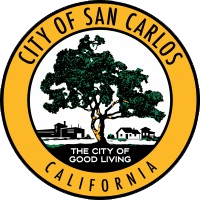
Many thanks to the Museum of San Carlos History, City of San Carlos Website (History Section), “A Short Walk Through San Carlos History” by the San Carlos Villagers, and “A Walk Back In Time” Website, for most of the content used in this section. For all resources, please go to the Reference Section of this website.
RESOURCES

Many thanks to the Museum of San Carlos History, City of San Carlos Website (History Section), “A Short Walk Through San Carlos History” by the San Carlos Villagers, and “A Walk Back In Time” Website, for most of the content used in this section. For all resources, please go to the Reference Section of this website.
